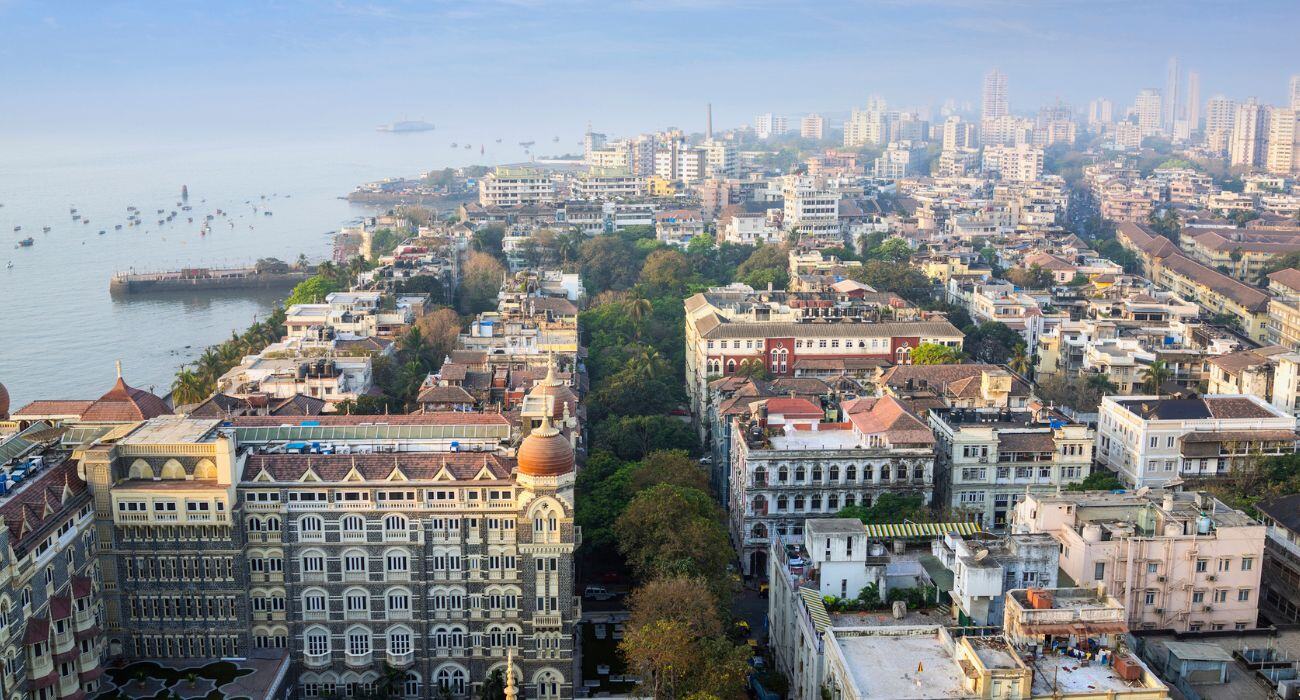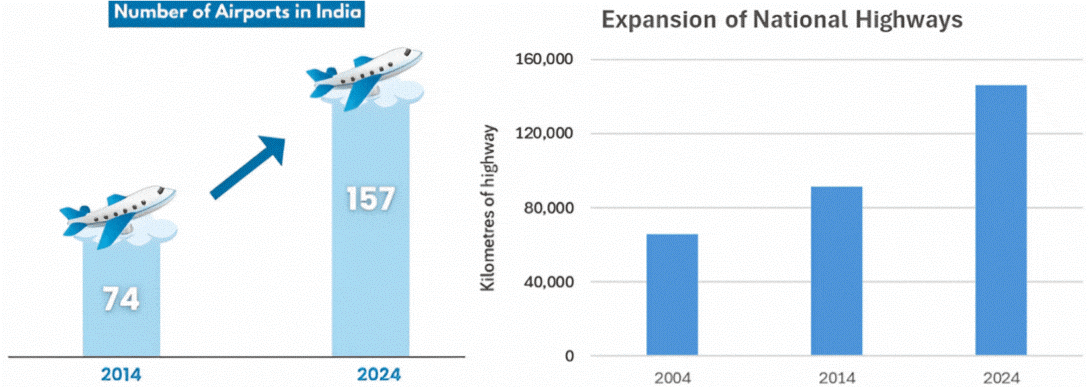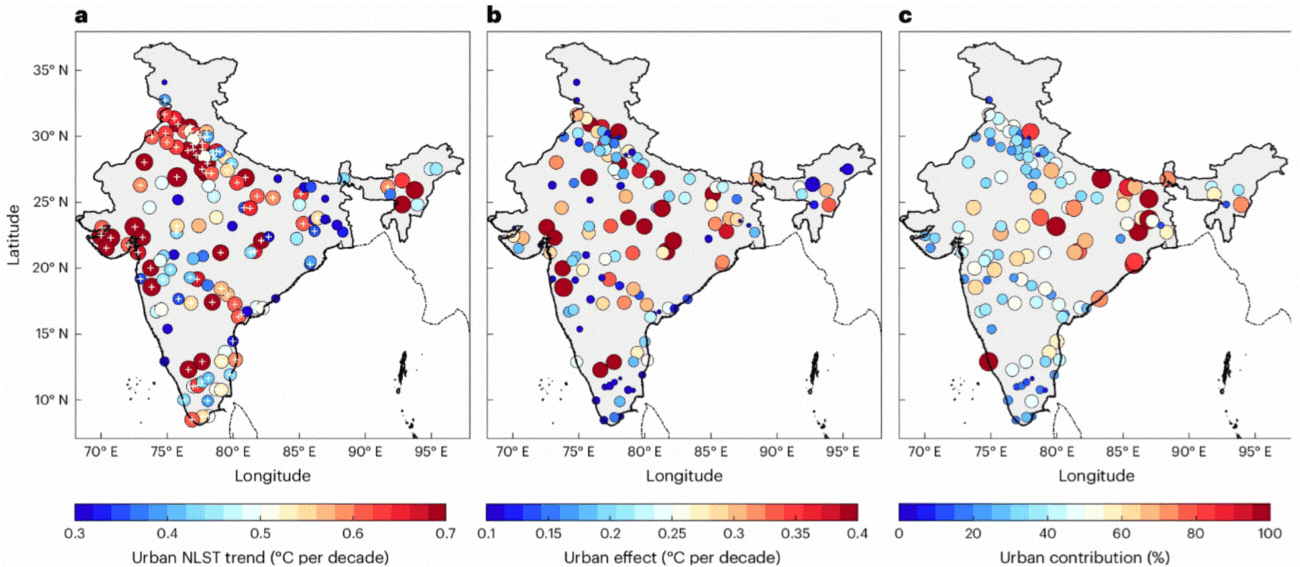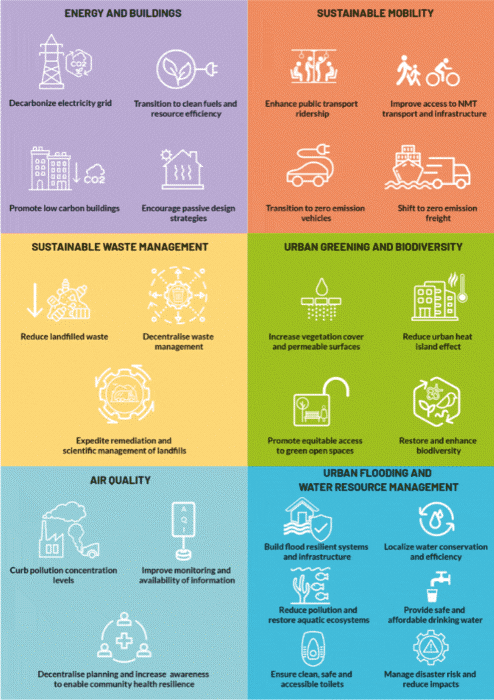
India remains the fastest-growing major economy, growing at 8.2% in the 2023/2024 financial year, according to the World Bank. Its growth was boosted by public infrastructure investment and an upswing in household investments in real estate.
Maxine Nelson
More infrastructure investment is needed to support this growth. For example, improving infrastructure at ports and logistics hubs will help streamline the movement of goods, which will boost India’s export competitiveness.
In fact, many infrastructure initiatives have begun, from the National Infrastructure Pipeline which is developing energy, roads, railways and urban development, to projects to develop highways and airports. These major projects are substantially increasing the amount of infrastructure. For example, the number of airports doubled in the last ten years, and national highway coverage has doubled in the last 20 years (see Figure 1). This rapid progress has been helped by their National Masterplan (PM Gati Shakti), which aims to streamline the planning and implementation of infrastructure projects to improve their efficiency.
Figure 1 Indian Infrastructure Is Rapidly Increasing

Source: Ministry of Information & Broadcasting: Infrastructure Development in India
Even though infrastructure is a key part of the built environment, it is often taken for granted. However, as explored in one of our recent articles, the potential consequences of damage to infrastructure can be very wide reaching. For example, firms may suffer from business interruption caused by damages to energy or water supplies, on top of any damage they experience directly to their own assets.
India has already seen damage to infrastructure. For example, extreme flooding in 2023, causing landslides, damages to infrastructure and agriculture, with the government declaring a state of emergency. Because infrastructure generally operates for many years it must be resilient not just to today’s climate but to the climate in the decades to come.
Urbanization Impacts
Globally more than half of the world’s population lives in urban areas, and that is expected to rise to 70% by 2050, according to the UN. While India had less urbanization, with 34% in 2018, it is expected to follow that trend — which means an extra 420 million people will move to cities by 2050. This high concentration of people living in cities means that damaged infrastructure can rapidly affect substantial amounts of the population, and economy, of a country.
This high percentage of urbanization also means that reducing emissions in urban areas is a key requirement to decarbonizing a country’s economy, as cities create 70% of all carbon emissions despite covering just 3% of the earth’s land surface, according to the World Economic Forum.
Not only do cities emit huge amounts of greenhouse gas emissions, warming in cities is higher than in the surrounding areas which intensifies the negative impacts climate change has on their citizens. A 2024 study in Nature found that between 2003-2020 Indian cities warmed at almost double the rate of the country as a whole. While some of this increase was due to the location of cities, urbanization increases the temperature in Indian cities on average 60% more than in the surrounding non-urban areas. The increases can be seen in Figure 2, where (a) shows how the nighttime land surface temperature has increased during 2003 to 2020; (b) shows the urbanization component of that warning in absolute terms, and (c) shows it in relative terms (that is, as a percentage).
Figure 2 Change in Nighttime Land Surface Temperature of Indian Cities and the Impact of Urbanization

Source: Urbanization and regional climate change-linked warming of Indian cities
The cities with the highest amount of warming from urbanization are mostly developing cities which are expanding rapidly. This provides opportunities to expand and develop them in ways that will both reduce their emissions and improve the lives of the people who live in them — not just by reducing the temperature in the cities but also by reducing the air pollution which kills millions of people and damages the health of many more.
Five of the Indian cities that actively working to reduce their emissions and build healthy and resilient communities (Ahmedabad, Bengaluru, Chennai, Delhi, Mumbai) are part of the C40 global network. This is a coalition of mayors of leading cities that work collaboratively to address climate change by both reducing their emissions and adapting to its effects.
The types of action that they are taking includes decarbonizing municipal buildings through increased energy efficiency, reducing greenhouse gas emissions to improve air quality, and making cities more resilient to flooding. For example, Bengaluru has projects to increase air quality, manage waste and optimize the operation of public transport. Chennai has installed solar panels on government buildings and is replacing diesel buses with electric ones.
Mumbai is taking the most ambitious action. In 2022 it declared that it will be South Asia’s first zero-emissions city — by 2050 — which will make it net zero 20 years before the rest of India. It is both mitigating and adapting to increased risks such as increased urban heat, more flooding and landslides, and high level of air pollution.
Economic Growth Doesn’t Always Mean Increases in Emissions
Given the size of its population, and its growth rate, it isn’t surprising that India is the third-largest energy-consuming country in the world. Although energy use has doubled since 2000, India’s per capita energy consumption is still less than half of the world average. However, most of its energy demand is still being met by fossil fuels. Given how India is expected to grow, the scale of future electricity demand growth is huge.
Thankfully India is one of the many countries that has progressively decoupled economic growth from growth in emissions, reducing its emissions per unit of GDP (excluding agriculture) by around a quarter between 2002 and 2016. It achieved this through increasing the proportion of non-fossil fuels, improving energy efficiency (e.g., installing LED bulbs, improving the energy efficiency of buildings, and increasing vehicles’ fuel efficiency), and increasing CO2 removal from forests and trees. The reductions are supported by many widespread initiatives, such as India’s Energy Conservation and Building Code, which has differentiated standards for India’s five major climate zones. It aims to reduce energy use in commercial buildings by 50% by 2030 with an associated reduction in CO2 emission of 250 million tons.
Taking Mumbai as an example, if no actions are taken the emissions are expected to reach 65 million tonnes CO2e/year by 2050, 2.7 times higher than they were in 2019. To avoid this, Mumbai’s action plan is to reduce emissions by 27% by 2030, and 72% by 2050, and use mangroves, forests and trees to offset the remaining emissions.
Emission reductions are being undertaken through many different projects, from energy efficiency of buildings to improved public transport, lower emissions transport, sustainable waste management, urban greening, pollution reduction and urban flooding control and water management, as shown in Figure 3.
Figure 3 Multiple Actions Are Needed To Mitigate Climate Change and Adapt To Its Impacts

Source: Mumbai Climate Action Plan Summary for Policymakers
Substantial Financing Is Needed
Given the scale of the investment needed in India, to improve its infrastructure while simultaneously both decarbonizing and to adapting to a changing climate, substantial financing will be needed.
A 2021 International Bank for Reconstruction and Development (IBRD) report estimated that USD 840 billion capital investment is needed for urban infrastructure over a 15 year period to 2036, equivalent to about 1.2% of GDP. However, at that point it only amounted to 0.6% of GDP, indicating a significant gap. A different study by the Council on Energy, Environment and Water estimated that USD 10.1 trillion is needed for India to achieve its 2070 net-zero goals, with a USD 3.5 trillion investment gap over that period.
However you look at it, substantial amounts of investment are needed. So how can India close these investment gaps? The World Bank found that public spending on infrastructure investment crowds in private investment, suggesting that as more infrastructure investment is undertaken, we should see more private finance being attracted to India. As the market develops, we will also likely see new products and innovative financing mechanisms being developed. A recent GARP article explored different types of innovative financing, from public private partnerships to green funds and convertible debt structures.
The rapid transformation of India’s infrastructure doesn’t just provide many opportunities for investment, it also has other positive side effects. The World Bank found that investment in urban development has a positive impact on growth, with a one rupee capital outlay producing a 2.5 rupee increase in state output on the first year, and a continued increase over four years. It also decreases unemployment and increases wages.
Parting Thoughts
Cities are vulnerable to the physical impacts of a changing climate, for instance through increased flooding and heatwaves. Infrastructure will play a critical role and India provides an excellent case study for how there are significant opportunities for smart infrastructure investment to achieve decarbonization, improved living standards and increased resilience against future physical risks.
Dr. Maxine Nelson, Senior Vice President, GARP Risk Institute, currently focuses on sustainability, climate and nature risk management. She has extensive experience in risk, capital and regulation gained from a wide variety of roles across firms including Head of Wholesale Credit Analytics at HSBC. She also worked at the U.K. Financial Services Authority, where she was responsible for counterparty credit risk during the last financial crisis.
Topics: Transition Risk, Physical Risk, Green Finance & Sustainable Business